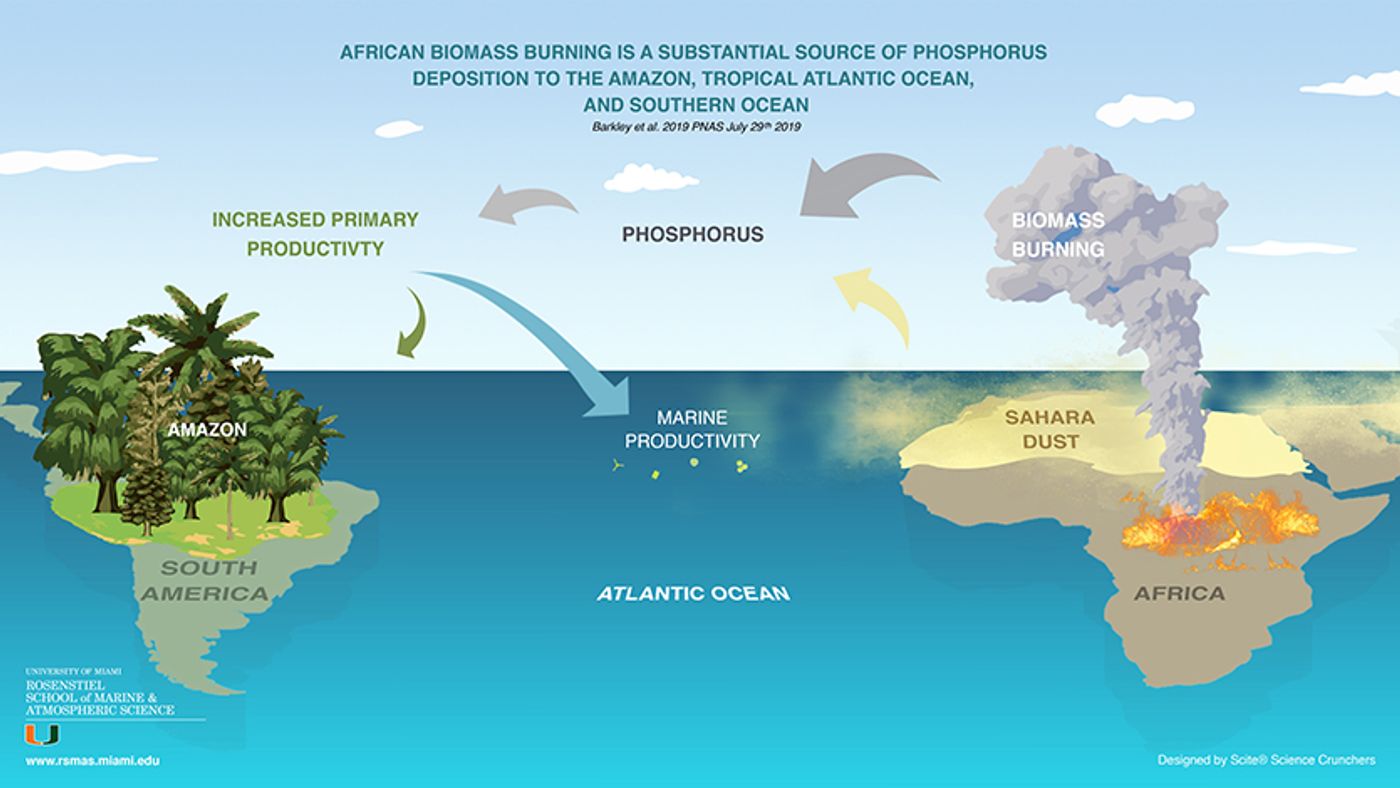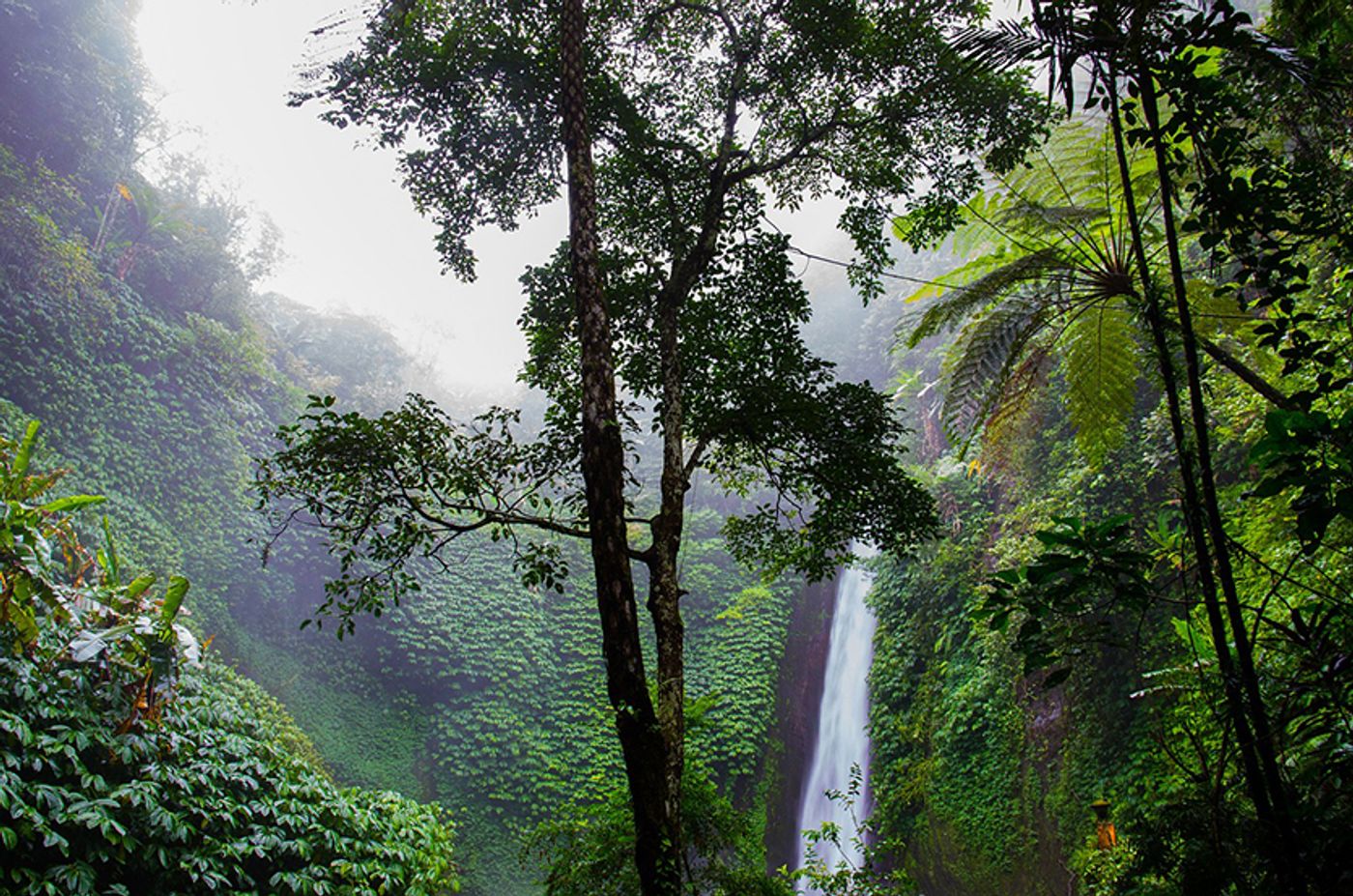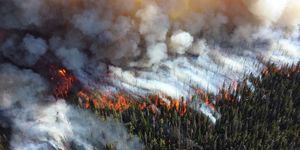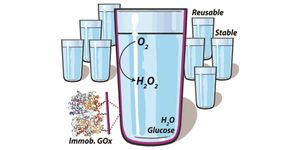Smoke From African Fires Fertilizes the Amazon & Oceans
NASA defines aerosols as tiny, airborne, solid or liquid particles present throughout the atmosphere. Although certain aerosols are detrimental to the atmosphere, many contain beneficial nutrients that can be transported by wind and deposited in ecosystems.
A new study from the University of Miami’s (UM) Rosenstiel School of Marine and Atmospheric Science pinpointed one of the most critical sources of soluble phosphorus for the Amazon River Basin, Tropical Atlantic Ocean, and parts of the Southern Ocean—smoke from fires in Africa. When deposited on land or in the sea, phosphorus acts as a fertilizer by increasing the primary productivity of plants on which entire ecosystems depend. The fires, referred to by the research team as “biomass burning,” include land clearing, brush fires, and industrial combustion emissions.
Previously, scientists assumed that dust from the Saharan Desert provided vital fertilizers to distant regions. In a press release from UM, senior author Cassandra Gaston concluded, “that biomass burning emissions transported from Africa are potentially a more important source of phosphorus to these ecosystems than dust.”
Image via University of Miami
The results of this research were published yesterday in Proceedings of the National Academy of Science. According to the research abstract, the research team collected and analyzed windborne dust on a hilltop in French Guiana, which is on the northeastern edge of the Amazon. These samples were analyzed for the total and soluble phosphorus content. Then, using satellite remote sensing tools, the team tracked smoke from Africa during times when higher levels of phosphorus were detected.
They discovered that during boreal spring—when African dust transport is the greatest—the dust supplies the majority of phosphorus to the Amazon, Tropical Atlantic Ocean, and the Southern Ocean regions. However, in boreal fall—during which dust transport is at its lowest—they measured shockingly high concentrations of soluble phosphorus. They estimated that African biomass burning supplies up to 50% of the phosphorus deposited yearly to the Amazon. Additionally, African biomass burning is a more important source of phosphorus to enhance primary productivity than Saharan dust for the Tropical Atlantic Ocean and the Southern Ocean regions.
Their results contribute to a growing body of information about how aerosols impact climate and ecosystems. In the press release from UM, Gaston stated, “these new findings have implications for how this process might look in the future as combustion and fire emissions in Africa and dust transport patterns and amount change with a changing climate and an increasing human population.”
Sources: University of Miami, PNAS, NASA










